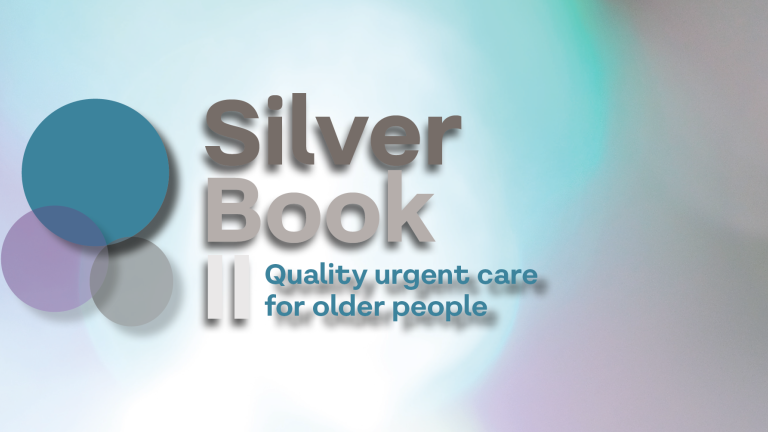Silver Book II: Quality Improvement
The Silver Book II was written to address the care needs of older people, specifically those living with frailty, during the first 72 hours of an urgent care episode. This chapter, by Jay Banerjee, looks at how to improve service quality and delivery.
Quality Improvement and service design
Improvement science based approaches296 offer a repertoire of methodologies for addressing systems of care for frail older people in urgent care. They all have in common certain attributes297 that require iterative approaches and a measurement mindset. It allows the practitioner to address improvement within complex298 health and care systems.
The Model for Improvement (MfI) gets us on the improvement journey with the questions ‘what are we trying to accomplish?’299 A helpful driver to support this is considering person-centred outcomes in older people,259 what matters to them rather than only focusing on what is the matter with them.
Frail older people benefit from comprehensive geriatric assessment (CGA) delivered by a multidisciplinary team.44 Various generic tools and techniques are available to assist multi-disciplinary team working and communication that are equally relevant for older people300-1 These constitute essential components within care systems to develop safer care and there are several tools that can help develop such an approach for frail older people.302-3
While getting into the improvement mindset, it is important to distinguish between providing complicated technical versus complex adaptive solutions to improvement problems. This may include the use of checklists but within the context of other processes to support cultural change around care delivery.304-6 Frail older people with their multiple comorbidities require a holistic assessment and a management approach, with a balance between addressing multiple body systems towards a state of homeostasis rather than maximising any one system. This in itself is an adaptive challenge, not only in terms of balancing treatment options, but also for teams working together to maximise functional outcomes. A lot of such approaches are relatively new for many clinical teams, traditionally experts in addressing single system solutions for single system problems in people with very few or no comorbidities.
It is important to understand contexts307-8 for improvement through use of different research and non-research based techniques including implementation science,309 knowledge translation310 and realist evaluation.311 Older people’s care, like any improvement programme, relies on continuously and relentlessly creating the ever-evolving context within which interventions can iteratively affect care.
Unfortunately, there is still a real dearth of research that describes the structure, process and resource implications for improving specifics around care of older people including delirium.85 There have been programmes to tackle these at systems level although data on effectiveness is lacking.312
The system should be designed such that the processes allow trained staff to deliver person-centred care and continuously strive to improve their performance and reliability. A human-centred design coupled with an improvement approach can offer the best combination for improving safety.313
Leadership, representative of person-centred values will support the delivery of outcomes that matter to frail older people.314

